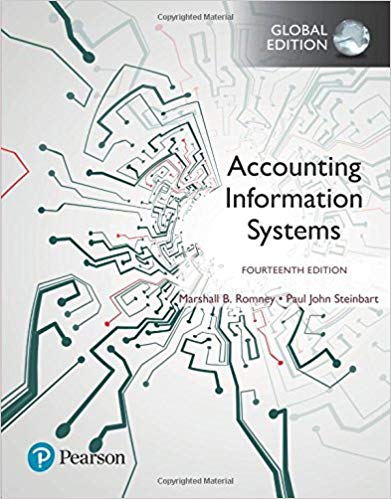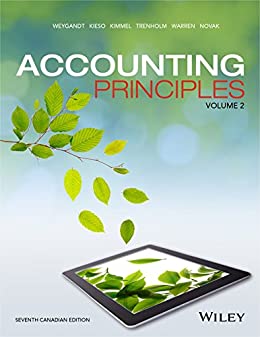Description
Test Bank For Accounting Information Systems, Global 14th Edition By Marshall B. Romney
Accounting Information Systems, 14e, Global Edition (Romney/Steinbart)
Chapter 3 Systems Documentation Techniques
1 Prepare and use data flow diagrams to understand, evaluate, and document information systems.
1) Graphical representations of information are often supplemented by
A) narrative descriptions.
B) relevant e-mail communications.
C) logic charts.
D) oral descriptions from management.
Answer: A
Concept: Data flow diagrams
Objective: Learning Objective 1
Difficulty: Easy
AACSB: Analytical Thinking
2) All of the following are guidelines for preparing data flow diagrams except
A) show the most detail in the highest-level DFD.
B) include all storage files, even if they are only temporary.
C) uniquely name all data flows.
D) sequentially number process bubbles.
Answer: A
Concept: Data flow diagrams
Objective: Learning Objective 1
Difficulty: Moderate
AACSB: Analytical Thinking
3) The Sarbanes-Oxley Act requires independent auditors to
A) create flowcharts to document business processes.
B) understand a client’s system of internal controls.
C) establish effective internal controls.
D) prepare and understand all types of system documentation.
Answer: B
Concept: Data flow diagrams
Objective: Learning Objective 1
Difficulty: Moderate
AACSB: Analytical Thinking
4) The passage of the Sarbanes Oxley Act
A) made documentation skills even more important.
B) requires public companies to prepare an annual internal control report.
C) mandates that auditors must be able to prepare, evaluate and read documentation tools such as flowcharts.
D) All of the above.
Answer: D
Concept: Data flow diagrams
Objective: Learning Objective 1
Difficulty: Easy
AACSB: Analytical Thinking
5) Which of the following is not a true statement?
A) Documentation tools save an organization both time and money.
B) Documentation tools are used extensively in the systems development process.
C) Data flow diagrams and flowcharts are the two most frequently used systems development documentation tools.
D) Data flow diagrams and flowcharts are difficult to prepare and revise using software packages.
Answer: D
Concept: Data flow diagrams
Objective: Learning Objective 1
Difficulty: Easy
AACSB: Analytical Thinking
6) A data flow diagram
A) is a graphical description of the source and destination of data that shows how data flow within an organization.
B) is a graphical description of the flow of documents and information between departments or areas of responsibility.
C) is a graphical description of the relationship among the input, processing, and output in an information system.
D) is a graphical description of the sequence of logical operations that a computer performs as it executes a program.
Answer: A
Concept: Data flow diagrams
Objective: Learning Objective 1
Difficulty: Easy
AACSB: Analytical Thinking
7) In a DFD, a “data sink” is also known as a
A) data store.
B) transformation process.
C) data flow.
D) data destination.
Answer: D
Concept: Data flow diagrams
Objective: Learning Objective 1
Difficulty: Easy
AACSB: Analytical Thinking
8) In a DFD, a “bubbles” is also known as a
A) data store.
B) transformation process.
C) data flow.
D) data destination.
Answer: B
Concept: Data flow diagrams
Objective: Learning Objective 1
Difficulty: Easy
AACSB: Analytical Thinking
9) In preparing a DFD, when data are transformed through a process, the symbol used should be
A) a circle.
B) an arrow.
C) a square.
D) two horizontal lines.
Answer: A
Concept: Data flow diagrams
Objective: Learning Objective 1
Difficulty: Easy
AACSB: Analytical Thinking
10) In general, a data destination will be shown by
A) an arrow pointing away.
B) an arrow pointing in.
C) arrows pointing both ways.
D) no arrows, only two horizontal lines.
Answer: B
Concept: Data flow diagrams
Objective: Learning Objective 1
Difficulty: Easy
AACSB: Analytical Thinking





Be the first to review “Test Bank For Accounting Information Systems, Global 14th Edition By Marshall B. Romney”